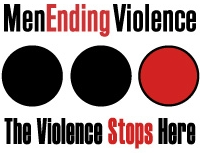
Safety Planning for Non-Status Immigrants, Refugees, and Refugee Claimants Facing Intimate Partner, Domestic, or Sexualized Violence
Safety Resource Blog Week Six
Being a newcomer has its own set of challenges. Many individuals and families flee their homes seeking refuge from violence and oppression, hoping to build a new life centred on safety and security. For many, this move is a life-saving opportunity.
However, for many newcomers, particularly visibly marginalized people, the resettlement experience is often tainted by the looming fears of discrimination, racism, and social isolation. These challenges become especially formidable when attempting to escape from domestic violence.
At times, women and children fleeing a violent country, state, or regime find that escaping to a new environment doesn’t necessarily mean freedom from violence; in fact, they are at a higher risk of violence and abuse due to economic and language barriers.
Newcomer women experiencing domestic violence or intimate partner violence face significant challenges, making it difficult to escape their abusive partners. Often, abusive partners exploit their vulnerabilities, using tactics such as threats of deportation, destruction or withholding of important documents, and isolation from community support networks.
Furthermore, abusive partners may use coercion tactics to sabotage opportunities of integration by isolating them from the community and depriving them of opportunities that would benefit their integration, such as newcomer life skills training or language classes in an attempt to maintain control over their victims and obstruct their victim’s ability to seek help.
In light of these challenges, it is important to develop safety plans tailored to the specific needs and circumstances of non-status, immigrants, refugees, and refugee claimants facing intimate partner, domestic, or sexualized violence.
These safety plans should cover strategies for securing important documents, accessing emergency shelters, navigating legal avenues for protection, and connecting with culturally appropriate support services.
So, what is a safety plan?
A safety plan is a personalized strategy designed to facilitate a safe escape from an abusive situation.
It serves as a key tool in assessing and outlining options for safety and freedom. Given that the risk of lethal violence tends to escalate during or after a woman leaves an abusive partner, planning for safety becomes critical.
Personalized safety plans are adaptable tools crafted to keep individuals safe in ever-changing situations. They encompass information specific to you and your life, enhancing safety at school, work, home, and other places you visit daily. These plans can also extend to include considerations for your children, pets, workplace, and school.
If you or someone you know is at risk and needs resources to create a personalized safety plan, visit BWSS.org/why-safety/planning.
Utilize our interactive online tool to create your personalized safety plan, or contact our Safety Changes Everything advocates toll-free at 1-855-687-1868.
In Metro Vancouver, call 604-687-1867 for support in creating your own safety plan.
Remember that a safety plan is NOT a replacement for calling 911 if you’re in an immediate danger.
If you call 911 note you can request an interpreter if you don’t speak English.
What are essential components a newcomer domestic abuse victim should consider into their safety plan?
Securing Important Documents:
Ensure that essential documents like identification, passports, and legal papers are stored in a secure and accessible location. Consider creating duplicates or storing copies with a trusted friend or family member.
Legal Assistance:
Seek information about legal options and resources available, such as obtaining restraining orders or exploring avenues for custody arrangements.
Cultural Sensitivity:
Consider cultural nuances and sensitivities when developing the safety plan to ensure it aligns with the individual’s unique background and needs.
Keep in mind:
For a safety plan to be effective, it’s crucial to ensure that the information provided is honest and accurate.
Once you’ve finished creating your safety plan, store it in a secure location that is easily accessible to you. Consider sharing a copy with a trusted person you can rely on.
If you feel uncomfortable keeping a printed copy, you can still utilize the safety tips and try to memorize at least one phone number of a trusted individual. This way, you’ll have a backup plan in case of emergency.
How can I provide support and safety planning for non-status, refugee, refugee claimants and immigrant women facing domestic violence?
There are many reasons why women may be forced to migrate, including the dismantling of their lands, gender-based violence, oppression, persecution, political upheaval, femicide, war, economic violence, and the impacts of colonization and globalization.
Upon arrival in Canada, a migrate woman’s immigration status will play a huge role on the level of barriers and oppression she may face, particularly when accessing services.
Recognizing the unique needs of migrant women who have fled under extreme circumstances and with an immense need for support to overcome the impacts of migration, gender-based violence, and the resettlement journey is the first step in working with newcomer women.
Among the steps and actions needed when providing services to migrant women and girls in their journey towards reaching safety, it’s important to adopt a feminist, anti-oppressive, trauma-informed, intersectional, decolonial, and culturally appropriate approach.
This ensures that support is tailored to their unique experiences and challenges, fostering a safe and empowering environment for healing and recovery.
To learn more about how better support women with precarious immigration status, refugees, refugee claimants and immigrant women facing domestic violence visit the links below:
If you or someone you love is in need of support, please contact the Battered Women Support Services Crisis Line:
Call toll-free: 1-855-687-1868
Metro Vancouver: 604-687-1867




